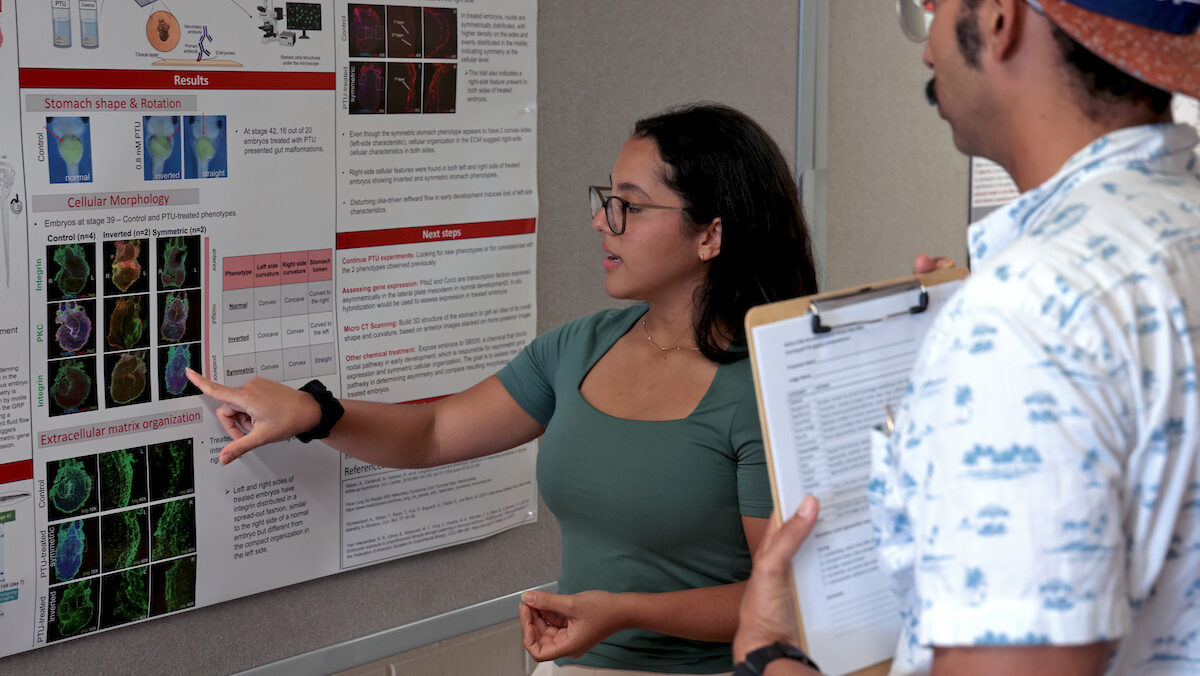Tracking a “Stealth” Pathogen
Dr. Edward Breitschwerdt, professor of internal medicine in the Department of Clinical Sciences, has discovered that certain arthropod-borne bacteria may be responsible for some chronic and debilitating neurological illnesses in humans, particularly among people with substantial animal contact or tick exposure.
One culprit is Bartonella henselae, a strain of bacterium transmitted to cats by fleas. Researchers have known that B. henselae can be carried in cat’s blood for months to years and is the cause of cat scratch disease—a bacterial infection resulting from the scratch, lick, or bite of a cat that can cause swelling of the lymph nodes in humans. Cat scratch disease is a relatively brief and self-limiting illness.
What Dr. Breitschwerdt—an internationally recognized expert on tick-borne diseases—and researchers in his Intracellular Pathogens Research Laboratory in the Center for Comparative Medicine and Translational Research have discovered is that these bacteria, which can be transmitted by variety of insects (ticks, fleas, sand flies, and biting flies) to numerous reservoir hosts including cats, dogs, cows, horses, squirrels, raccoons, and other mammals, can cause persistent intravascular infections in immunocompetent humans. Based upon our current understanding, people may be infected directly by insect bites or indirectly by a host animal’s salvia, scratch, or bite.
“What we have found is that members of the genus Bartonella have evolved so successfully that transmissionof these bacteria by numerous insect vectors to numerous reservoir species results in long term intravascular infections and bacterial persistence in multiple different tissues without harming the adapted host,” says Dr. Breitschwerdt, who also is an adjunct professor of medicine at Duke University. “We have known since the AIDS epidemic that those individuals with a suppressed immune system are at risk for a Bartonella infection. We are only now becoming aware, because of our newly developed testing abilities, of the extent to which these Bartonella strains exist and can cause disease in animals and humans. The importance of our research is that Bartonella infections are occurring in immunocompetent people.”
Cat scratch disease, for example, was thought to be a self-limiting, or a “one-time” infection; however, Dr. Breitschwerdt’s previous work discovered cases of children and adults with chronic Bartonella infections—from strains of the bacteria that are found in both cats (B. henselae) and dogs (B. vinsoniisubsp. berkhoffii). His research group has also reported infection with B. quintana in cats, dogs and non-human primates, a strain of the bacteria that historically was only thought to infect people and was the cause of Trench Fever in World War I.
In a study published in the September volume of the Journal of Clinical Microbiology, Dr. Breitschwerdt and colleagues from the Duke University Medical Center and the Centers for Disease Control and Prevention in Atlanta were able to detect one or more strains of Bartonella in blood samples from six patients suffering from a broad spectrum of neurological and neurocognitive abnormalities, including chronic migraines, seizures, memory loss, disorientation and weakness.
All of the patients in the study had both frequent tick exposure and significant animal exposure—some were veterinarians, others had grown up on farms or had occupations that kept them outdoors—and all of them suffered from chronic, debilitating neurological problems.
The patients were treated with antibiotics, and three of them saw marked improvement. In the other cases, improvements were minimal or short-term.
Dr. Breitschwerdt believes that his research offers hope—perhaps the identification of a specific infectious cause of chronic neurological disease and another potential avenue of treatment—for what could be a significant segment of the population.
“Bartonella has been described by some scientists as a ‘stealth pathogen,’” he says. “Our research could lead to the elimination of what may be a silent and currently unrecognized epidemic among humans. The good news is that Bartonella is treatable in both animals and humans with antibiotic therapy and that keeping fleas and ticks off pets and minimizing human exposure to ticks can help prevent the transmission of the bacteria.”
An abstract of the paper follows.
“Bartonella sp. Bacteremia in Patients with Neurological and Neurocognitive Dysfunction”
Published: Journal of Clinical Microbiology, Sept. 2008
Authors: E. B. Breitschwerdt, R. G. Maggi, N. A. Cherry, North Carolina State University; W. L. Nicholson, Duke University Medical Center; C. W. Woods, Centers for Disease Control and Prevention
Abstract: We detected infection with a Bartonella species (B. henselae or B. vinsonii subsp. berkhoffii) in blood samples from six immunocompetent patients who presented with a chronic neurological or neurocognitive syndrome including seizures, ataxia, memory loss, and/or tremors. Each of these patients had substantial animal contact or recent arthropod exposure as a potential risk factor for Bartonellainfection. Additional studies should be performed to clarify the potential role of Bartonella spp. as a cause of chronic neurological and neurocognitive dysfunction.
November 21, 2008


